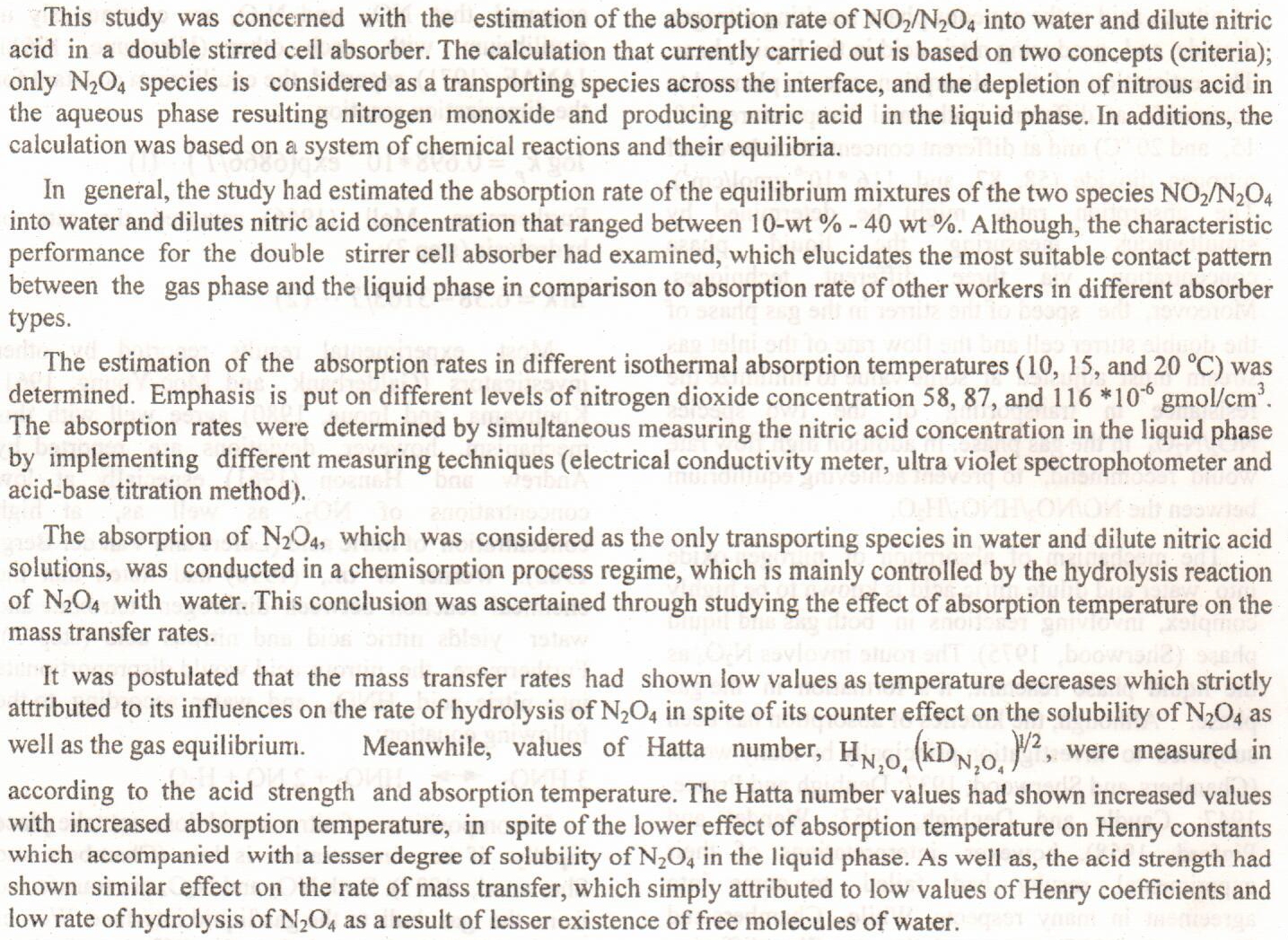
Polymers have the ability to extract water after they have been added to the mortar or concrete mixture. They provide the absorbed water during hydration functioning as internal water source. Absorption polymers can absorb up to hundred times of their own weight of pure water.This research deals with the use of water absorption polymer balls in concrete and study the volumetric change of these mixes and compared the results with reference mix (without polymers). Samples were cured both in air and in water for the mixes to compare results which show that samples in air behave for expansion while sample in water acted for shrinkage.
The analysis and efficiency of phenol extraction from the industrial water using different solvents, were investigated. To our knowledge, the experimental information available in the literature for liquid-liquid equilibria of ternary mixtures containing the pair phenol-water is limited. Therefore the purpose of the present investigation is to generate the data for the water-phenol with different solvents to aid the correlation of liquid-liquid equilibria, including phase diagrams, distribution coefficients of phenol, tie-lines data and selectivity of the solvents for the aqueous phenol system.
The ternary equilibrium diagrams and tie-lines
... Show MoreActivated carbon was Produced from coconut shell and was used for removing sulfate from industrial waste water in batch Processes. The influence of various parameter were studied such as pH (4.5 – 9.) , agitation time (0 – 120)min and adsorbent dose (2 – 10) gm.
The Langmuir and frandlich adsorption capacity models were been investigated where showed there are fitting with langmmuir model with squre regression value ( 0.76). The percent of removal of sulfate (22% - 38%) at (PH=7) in the isotherm experiment increased with adsorbent mass increasing. The maximum removal value of sulfate at different pH experiments is (43%) at pH=7.
The vacancy of natural resources is undoubtedly limited by time. The sustainable development principle recommends modern technology for its protection and renewal. This project conducted analyses on two underground water sources in the north of Algeria (Mechroha Province). Besides, the use of the hardness factor and the adoption of the titration method, which is the determining the concentration of an unknown solution using a known solution concentration, have permitted the characterization of the examples taken and to verify their conformity to the standard required, the results found showed HT=6.66 French degrees (oF) ) for Ain Guilloume water spring in comparison to Ain Messai water spring H
The implementation of nanotechnology in all industries is one of most significant research fields. Nanoparticles have shown a promising application in subsurface fields. On the other hand, various surfactants have been used in the oil industry to reduce oil/water interfacial tension and also widely used to stabilize the nano-suspensions. The primary objective of this study was to investigate the improvements of surfactants ability in term of interfacial tension (γ) reduction utilizing addition of silicon dioxide nanoparticles at different temperatures and salinity. The pendant drop technique has been used to measure γ and electrical conductivity has been used to measure the critical micelle concentration (CMC). The synergistic effects of
... Show More (44)
(44)
 (51)
(51)
 (40)
(40)
 (34)
(34)
In this research a local adsorbent was prepared from waste tires using two-step pyrolysis method. In the carbonization process, nitrogen gas flow rate was 0.2L/min at carbonization temperature of 500ºC for 1h. The char products were then preceded to the activation process at 850°C under carbon dioxide (CO2) activation flow rate of 0.6L/min for 3h. The activation method produced local adsorbent material with a surface area and total pore volume as high as 118.59m2 /g and 0.1467cm3/g, respectively. The produced . local adsorbent (activated carbon) was used for adsorption of lead from aqueous solution. The continuous fixed bed column experiments were conducted. The adsorption capacity performance of prepared activated carbons in this work
... Show More
